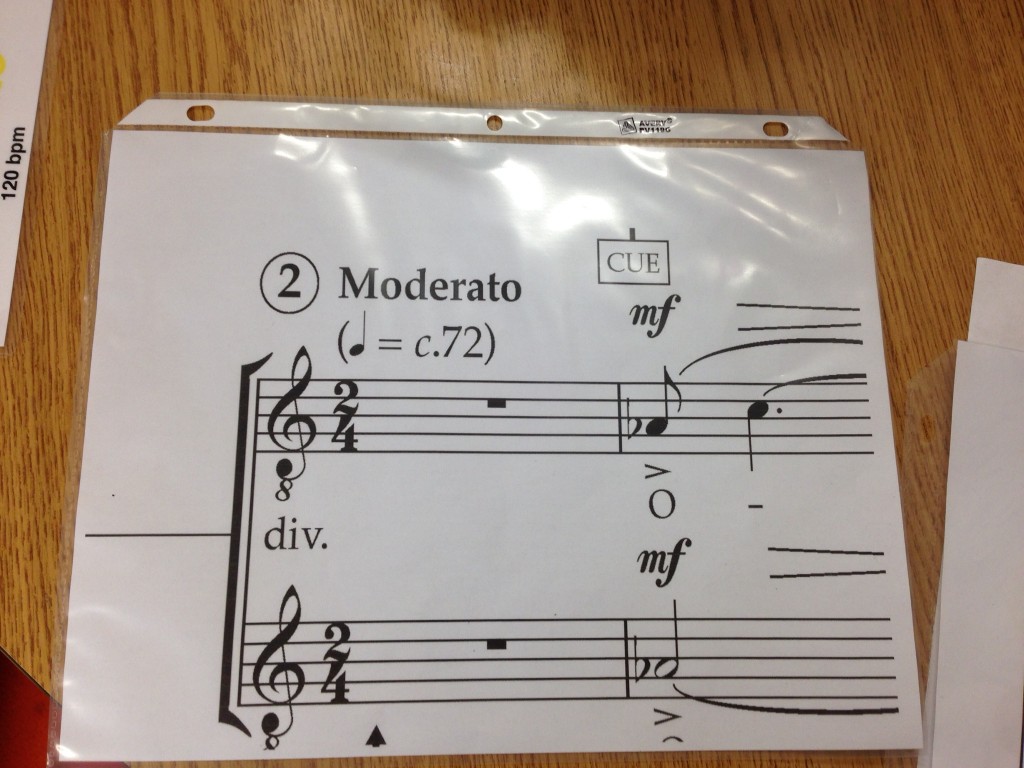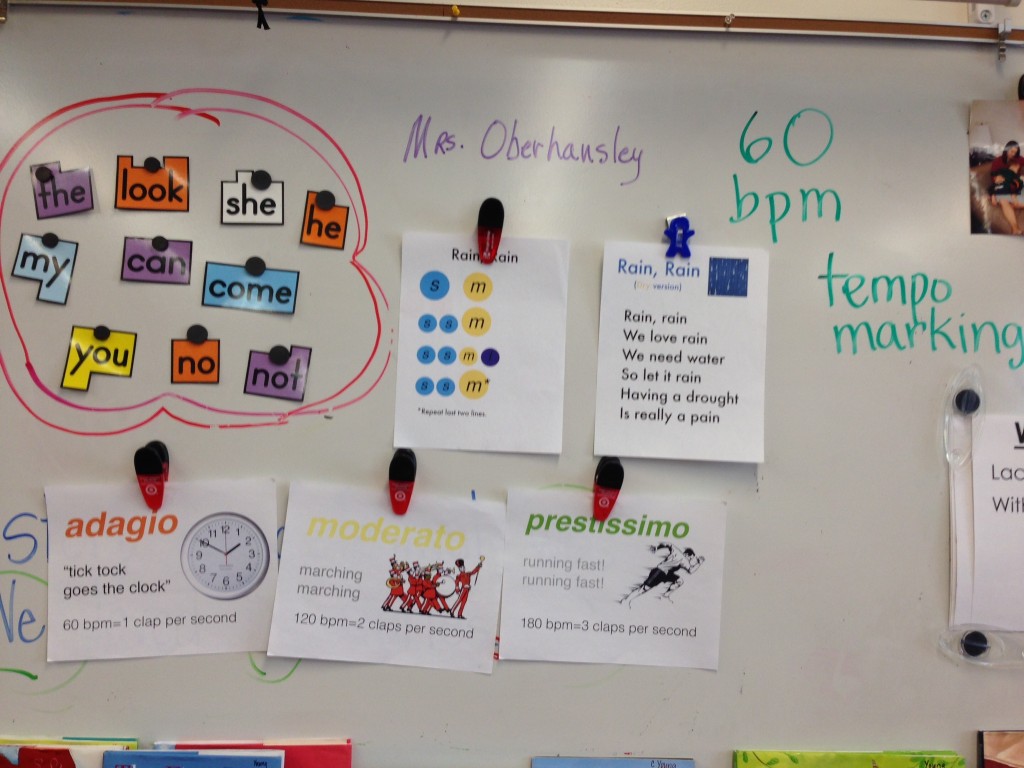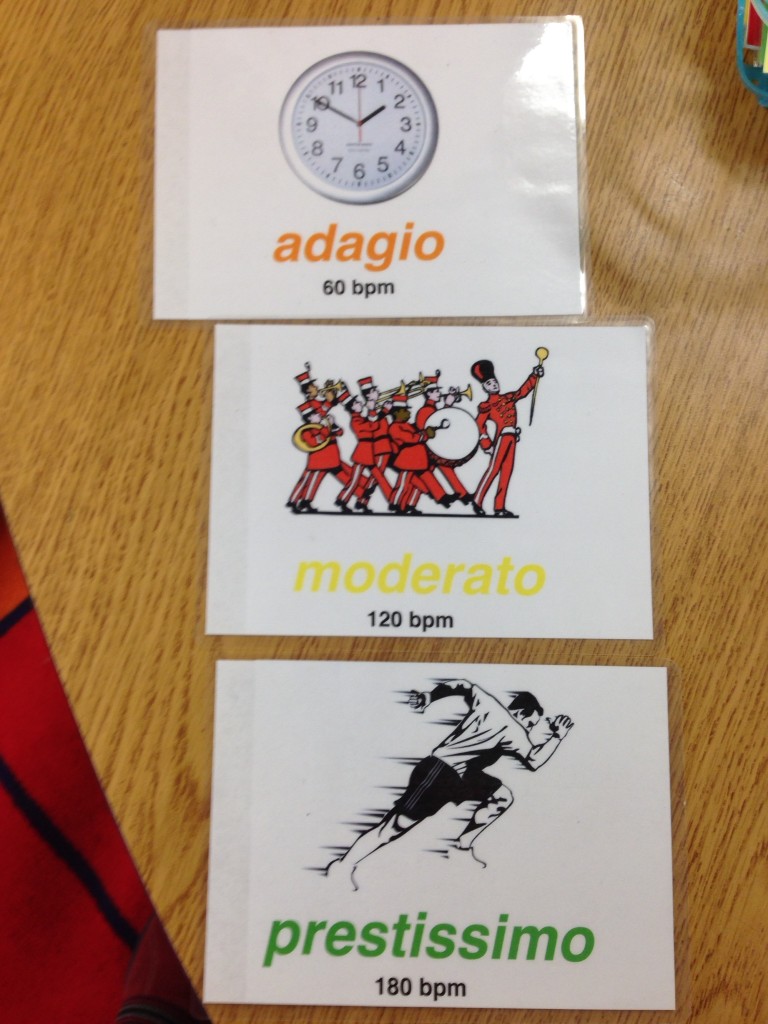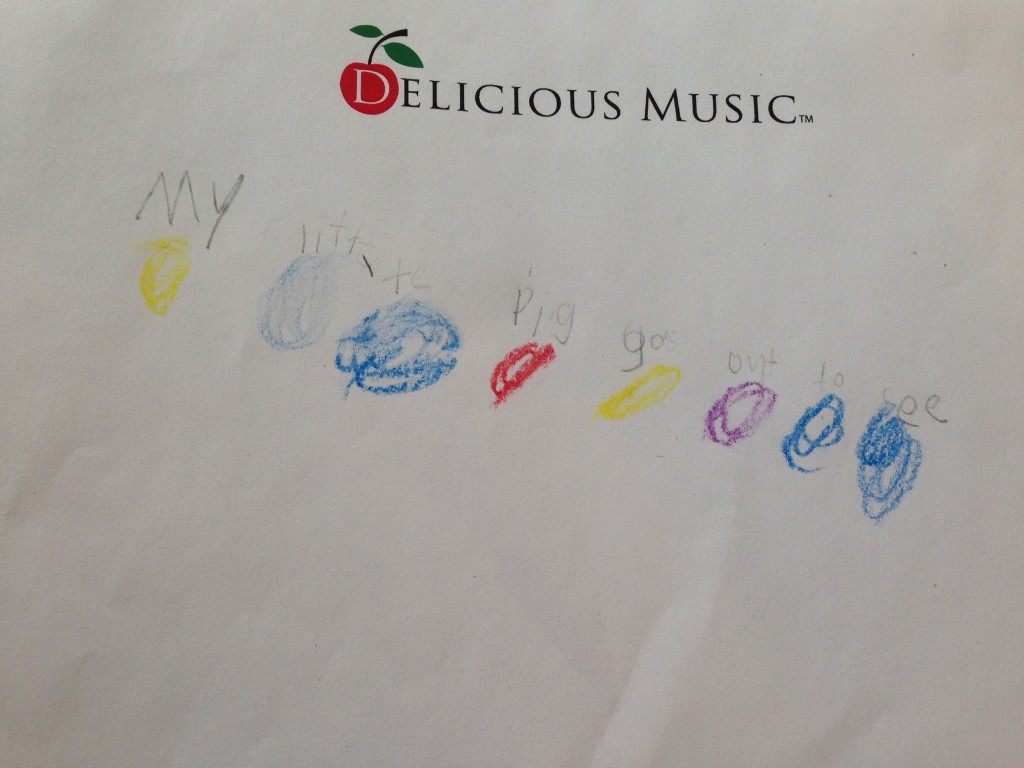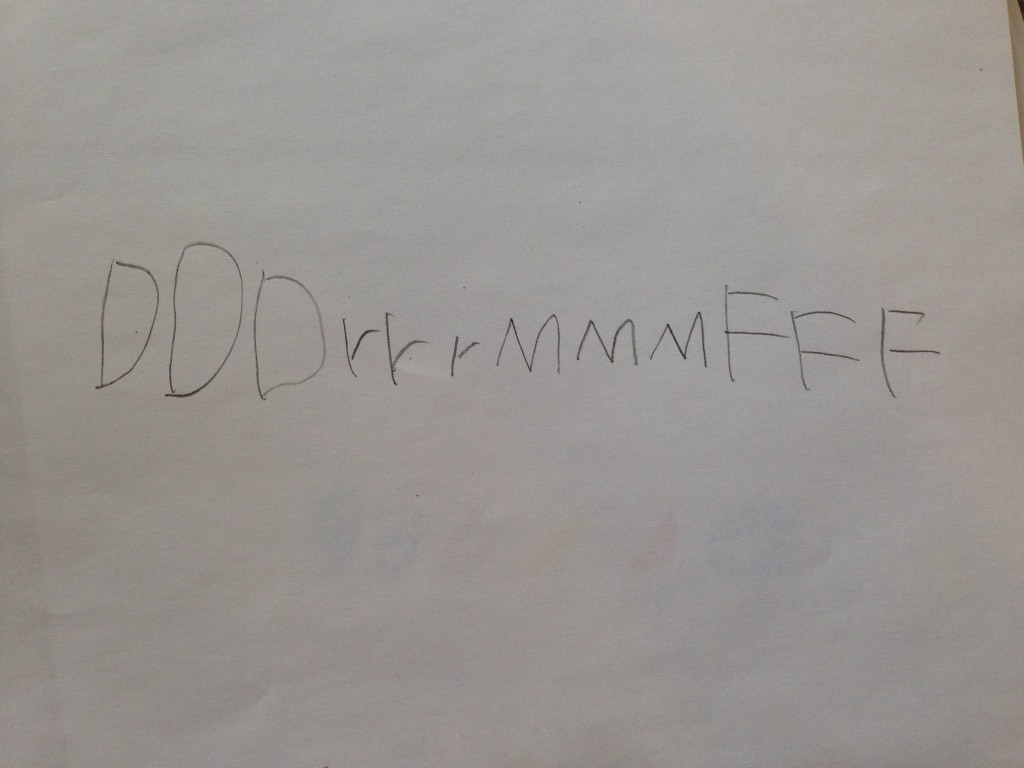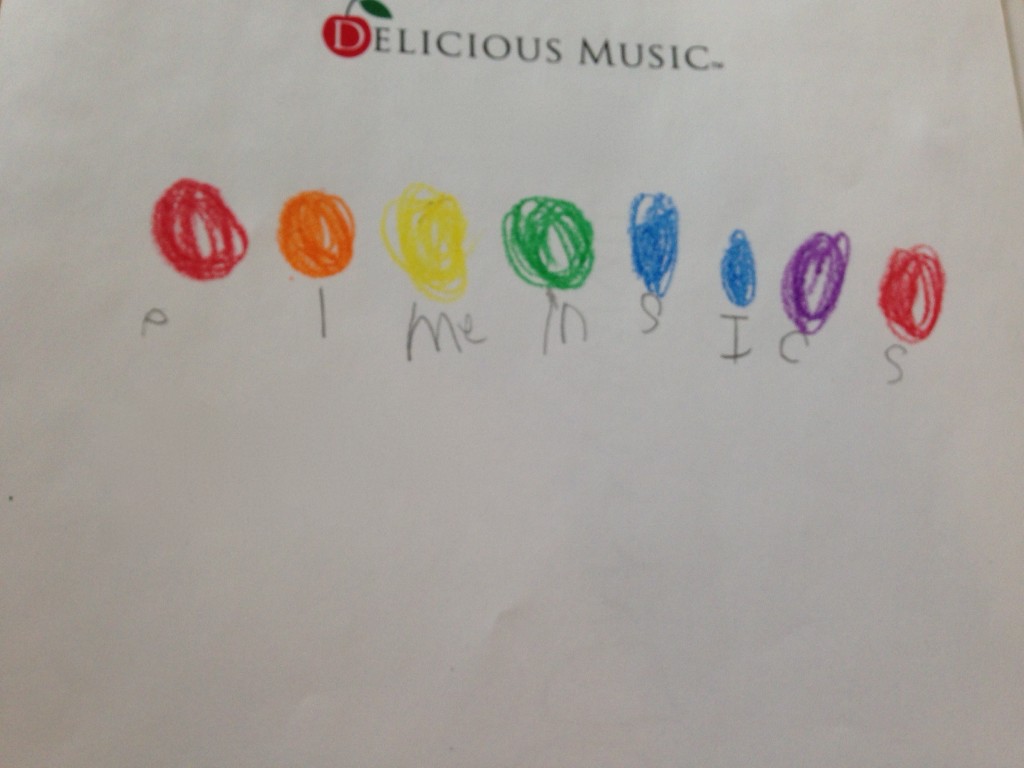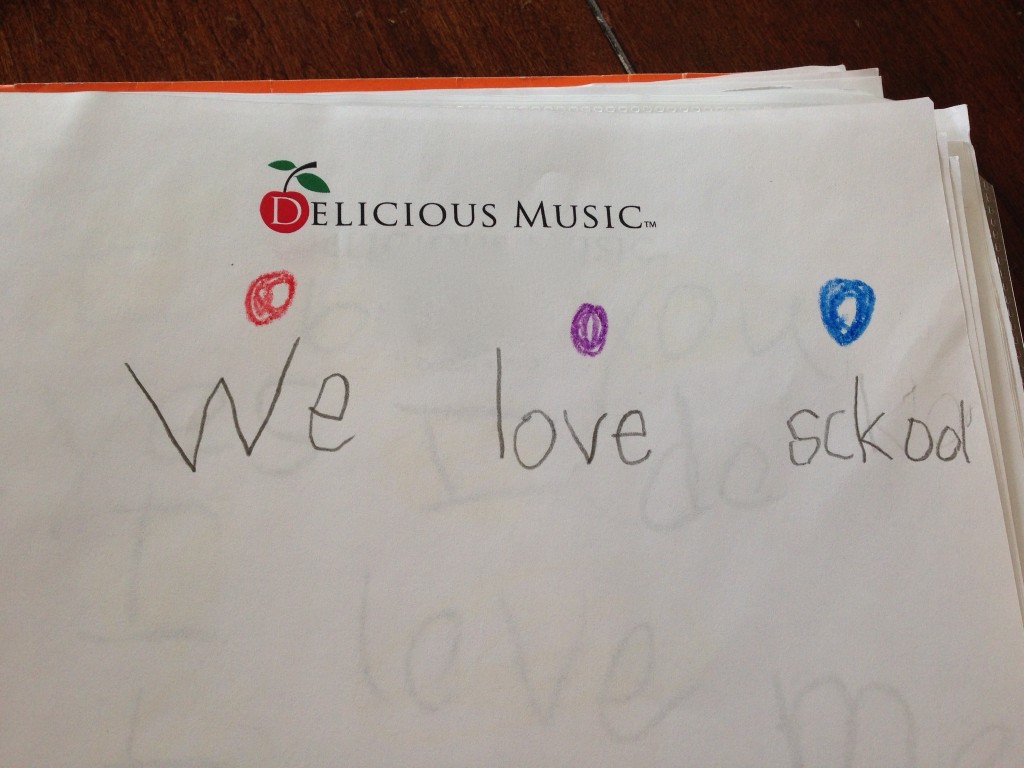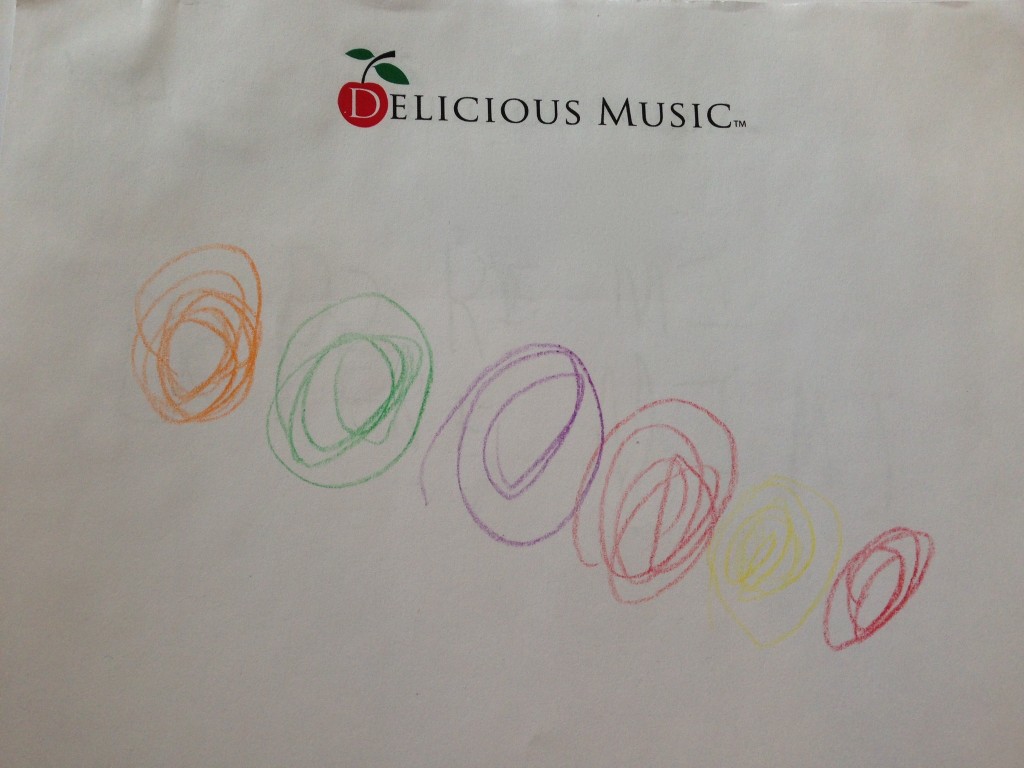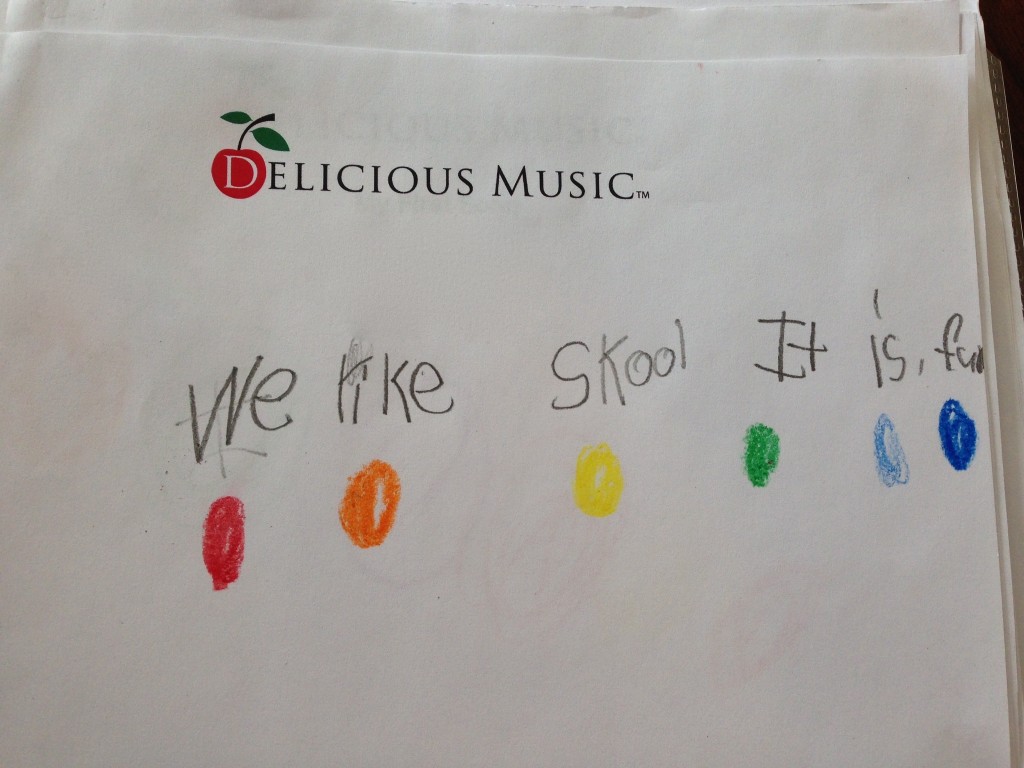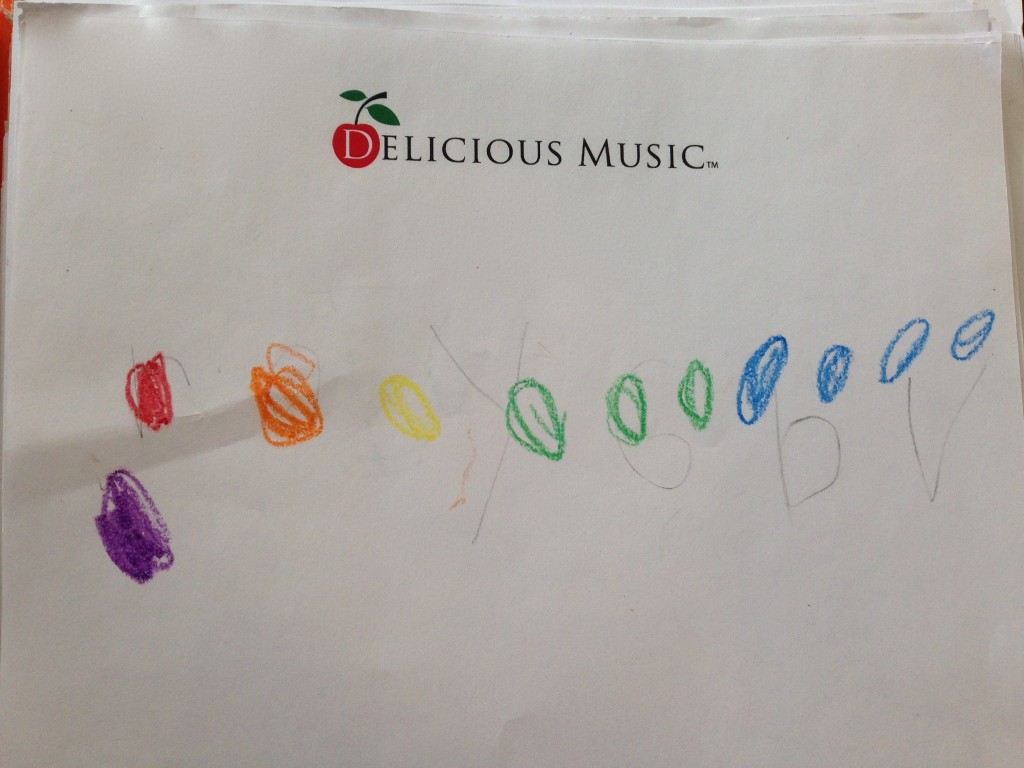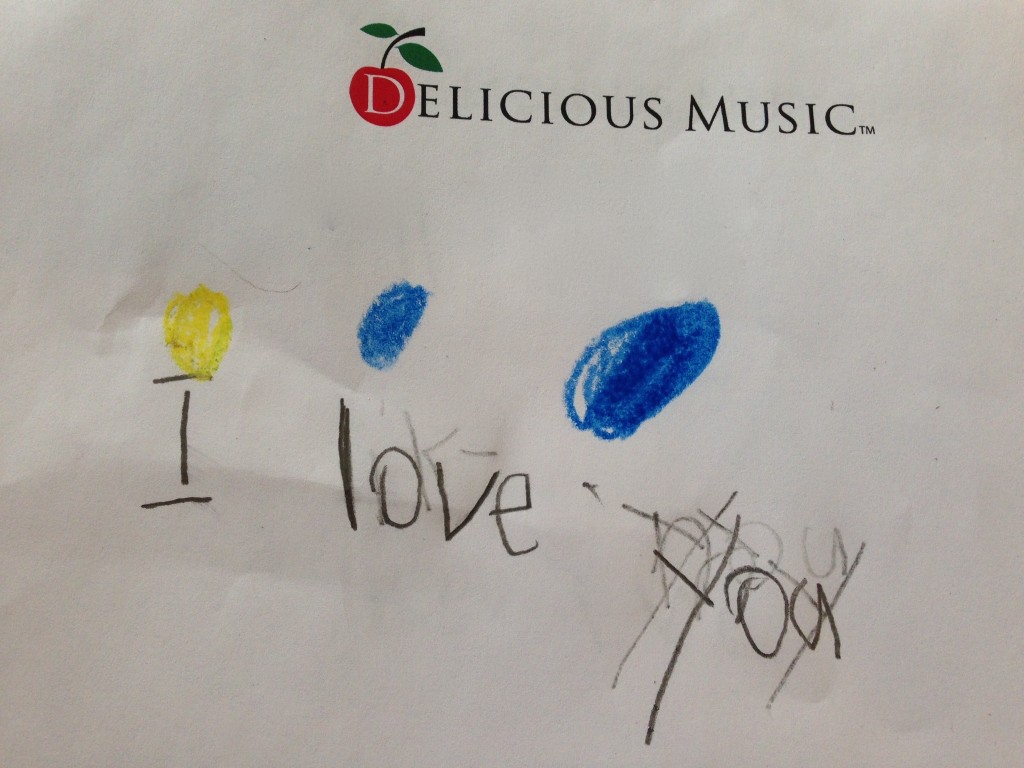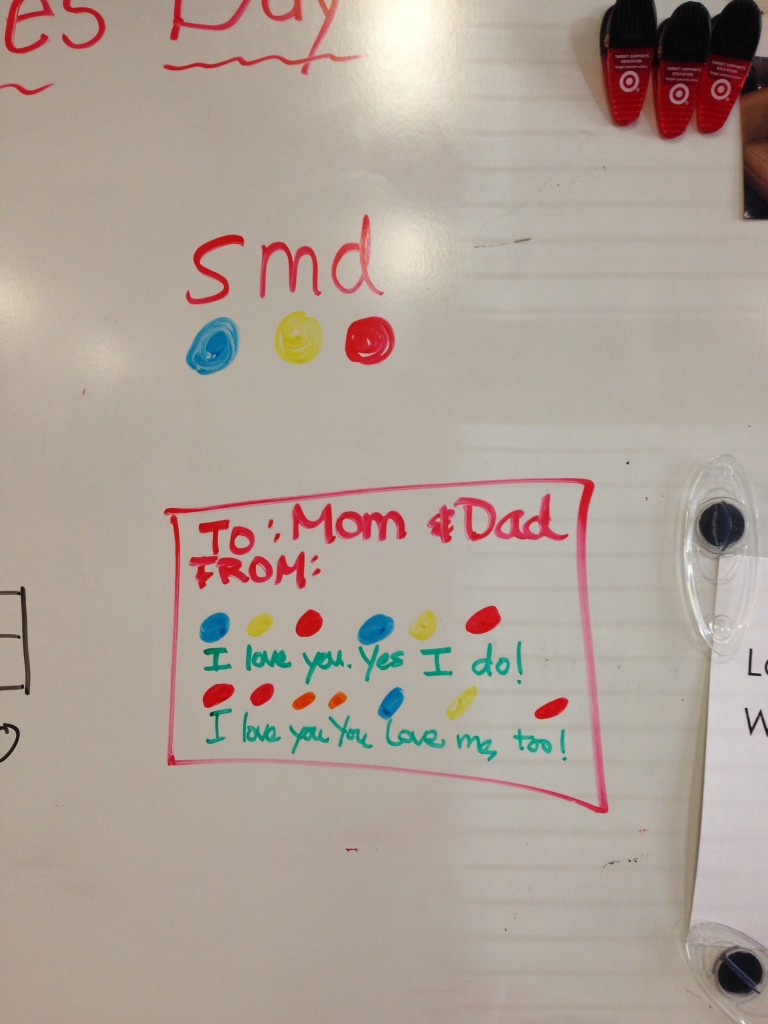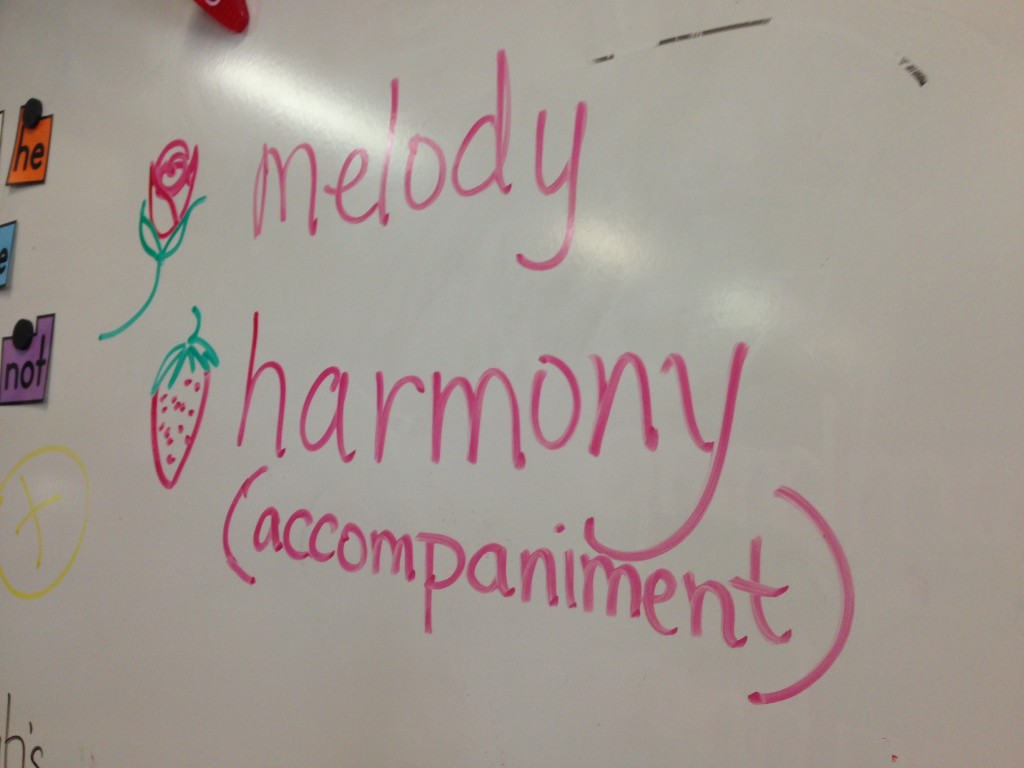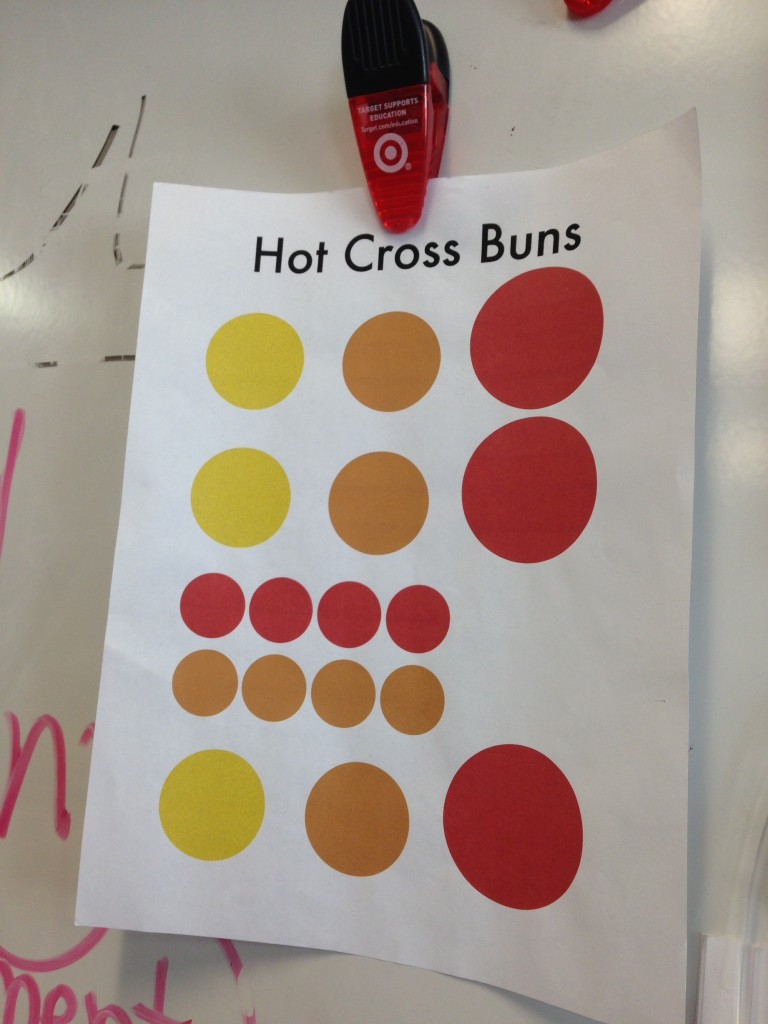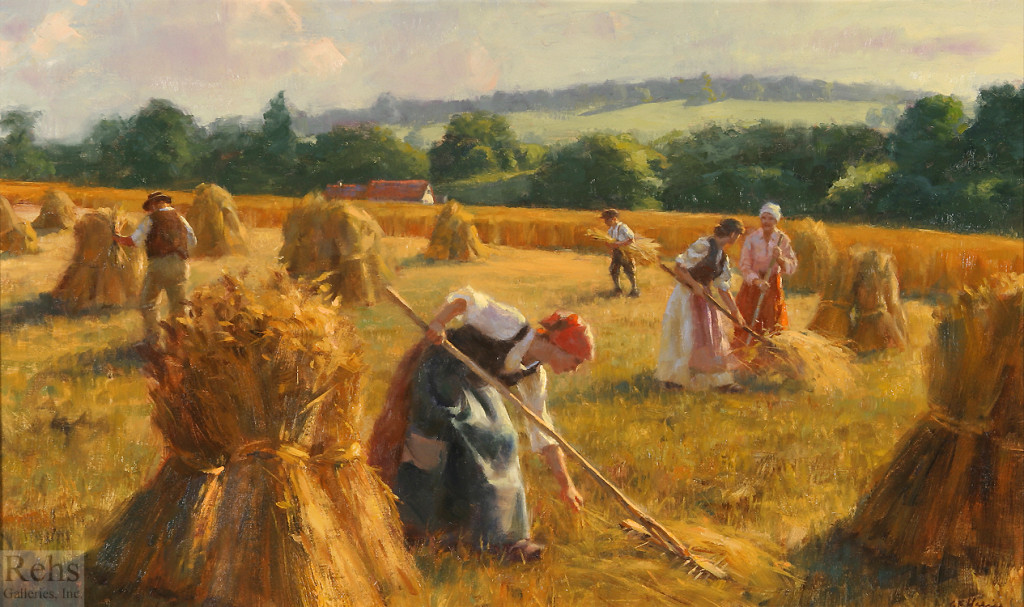Today I forgot to review our ascending and descending scales, and I didn’t take time to review the songs or harmony/melody/dynamic markings, etc. We’ll do that next week! But I was delighted when I told the children at the end of class the “secret” to learning a song: SLOW (I whispered). Practice a song slowly. If you aren’t getting it, practice it even more slowly. One boy piped up, “Practice it adagio”, he said with emphasis. There was our review, and the evidence once again that even with learning something one time, children can learn and retain that knowledge, at least for a while! I laughed and said, “YES! Don’t play it prestissimo or moderato, unless you have learned the piece. Practice it adagio.” Moments like that make my day! It is great fun to be a music teacher.
Today, before I asked them what their first instrument is: (yes, their BODY!), I introduced the topic. In the morning class, I had just gotten a class photo with the children’s names and told them that I was going to study it to learn their names better. I explained that when I see them only one day a week for a short time, I don’t remember their names as easily as if I saw them every day and was using their names over and over. I asked them if it is easier to learn something if you practice it ONCE a week, or EVERY DAY. They all agreed: every day! Then I told them that it is the same with learning an instrument. If you want to be really good at playing an instrument, you need to practice it often.
For the afternoon class, I asked them what their favorite thing was that they had learned so far this year. One girl shared that she loved learning about how sound makes vibrations, and she sang a little bit of the song they heard in that lesson. I built on that idea of vibrations by slapping the seat of a plastic chair next to me and asking how I made that sound. We agreed that the seat vibrated. I explained that it is hard to see some materials vibrate, while it is easier with other materials. I asked the teacher for a rubber band and stretched it between my fingers. Then I asked a child to pluck one side. She did, and we saw it vibrate. I walked around the children so that everyone could pluck the rubber band. I asked them, towards the end, what our first instrument is? Yes, our body. As I am speaking to them, I said, in my throat I have some vocal cords that are a little like this rubber band, vibrating by the air passing by them.
I sat down and explained that every person has a different body, and the shape of our head, mouth, teeth, tongue, lips–all of our body, actually–makes it so that every single person in the world has their own unique, special voice. “Steele,” I pointed out. “There is no one else in the world who has a voice just like you!”
Then we went on to discuss how our body is an instrument. We tried to see how many sounds we could make (that were appropriate!) with our bodies: singing, clapping, snapping (I admitted I’m a terrible snapper), rubbing our hands together, clucking our tongues, tapping our teeth, whistling, shushing (saying “shhhh”), popping our cheeks (as in the “Lollipop” song), marching/stomping, buzzing our lips. The children were wonderful at helping think of ways we could use our bodies to make sounds.
I told them about Bobby McFerrin, an accomplished musician, who makes music only using the instrument of his body! We “tasted” parts of a couple of his songs: “Blackbird,” “Simple Pleasures,” etc. (I didn’t think of this in the moment, but a Vocal Point video would have been a fun way to show how we can make music only with our body, such as their cover of “Happy.”)
Of course, while tasting these fun, jazzy songs, I invited the children to get up and dance in their spots!
“What other instruments do you know about?” I asked them next. We named off a bunch. I asked them which instrument we practice in class? Resonator bells. “TODAY we get to take home an instrument! It’s some practice bells.” I handed these out to Mrs. Young’s class. We pulled the bell set out of its bag, and I showed them the instructions on the back. Then I told them how to use them: I pulled out a smart phone and talked them through how their parent can type in this website address, touch the little menu in the top right hand corner, and then scroll down the menu until they get to the “Kindergarten Songs” link. I showed them how the first song is “Adios, Amigos.” I showed them how there were lyrics, so they could teach the song to their mom or dad or sister or dog. (I told them the dog couldn’t sing it, but he would be a nice friend!). Then I showed how they could follow the Solfa notation to play the song, or they could click on the PLAY arrow to play along with the song. I also played a little of the other recordings to demonstrate how there are different recordings of the same song. We played the song on our practice bells. (The afternoon class wasn’t given their bells yet because I still need a parent or youth volunteer to help glue the instructions on the back of their bells.)
Then we talked about caring for an instrument: Where do you store an instrument so that the dog or baby won’t chew on it, where it won’t fall into some water, where you can use it often but never sit or stand on it? We always wash our hands before using any instrument, etc. I asked for ideas and they had good ones!
We ended our lesson by singing our goodbye song (Adios, Amigos).
A sample of Bobby McFerrin:
Here’s a great idea for teaching a scale:
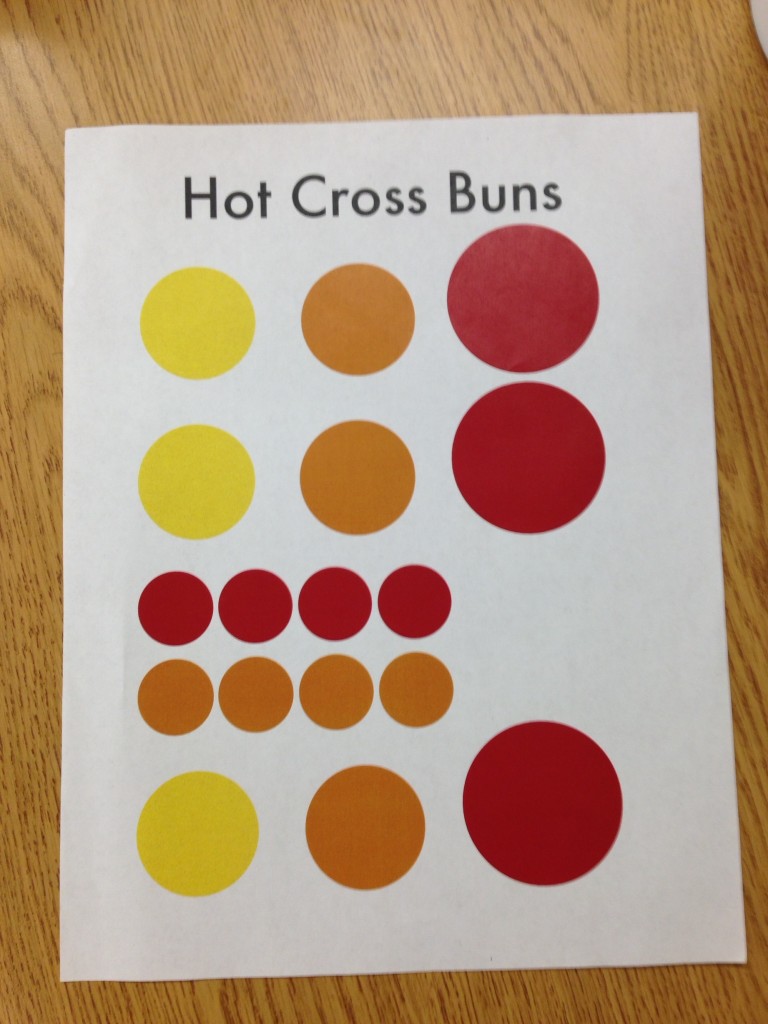 Today I told the children that I had been on an airplane last week flying to California. I asked them how fast an airplane flies. FAST! It has to fly fast, I explained, with all the weight it is carrying. How heavy is an airplane? VERY heavy, I answered (after they did), especially with all of those people on it! The engines have to be going very fast to create enough lift to get the heavy airplane up into the air!
Today I told the children that I had been on an airplane last week flying to California. I asked them how fast an airplane flies. FAST! It has to fly fast, I explained, with all the weight it is carrying. How heavy is an airplane? VERY heavy, I answered (after they did), especially with all of those people on it! The engines have to be going very fast to create enough lift to get the heavy airplane up into the air!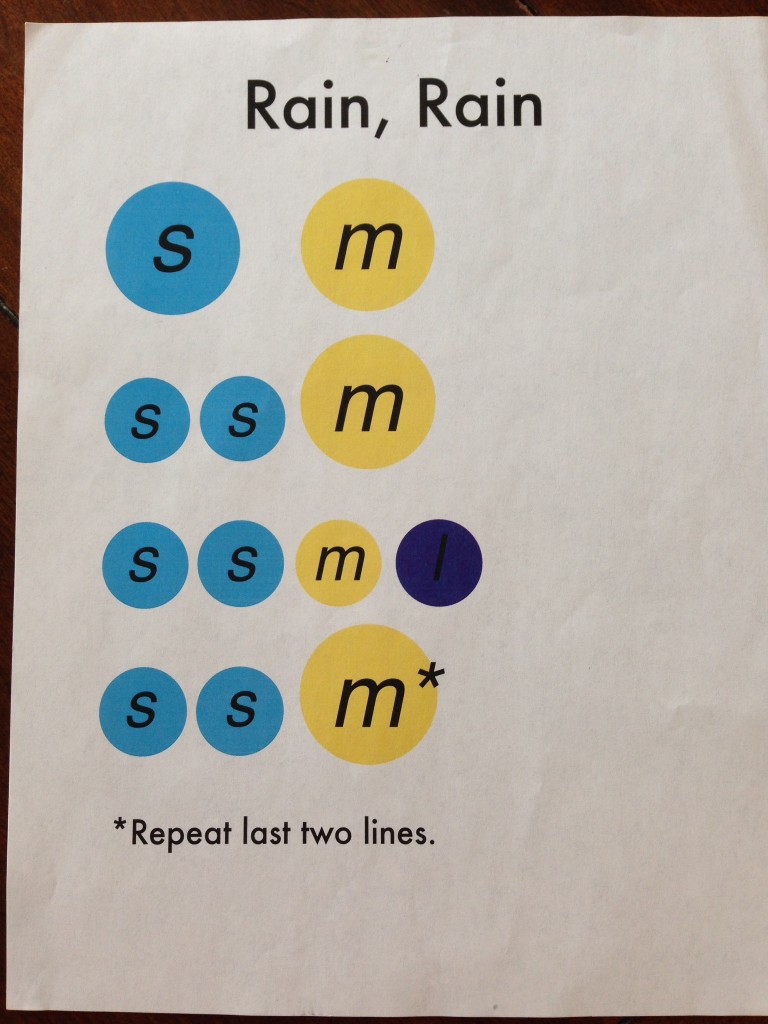
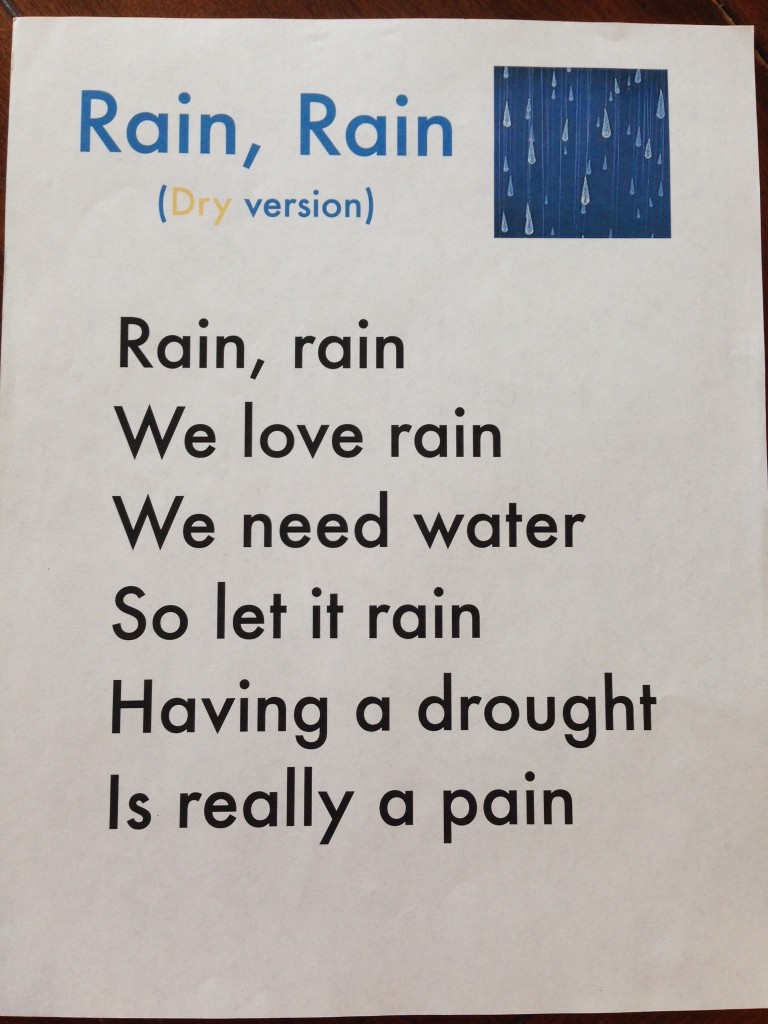
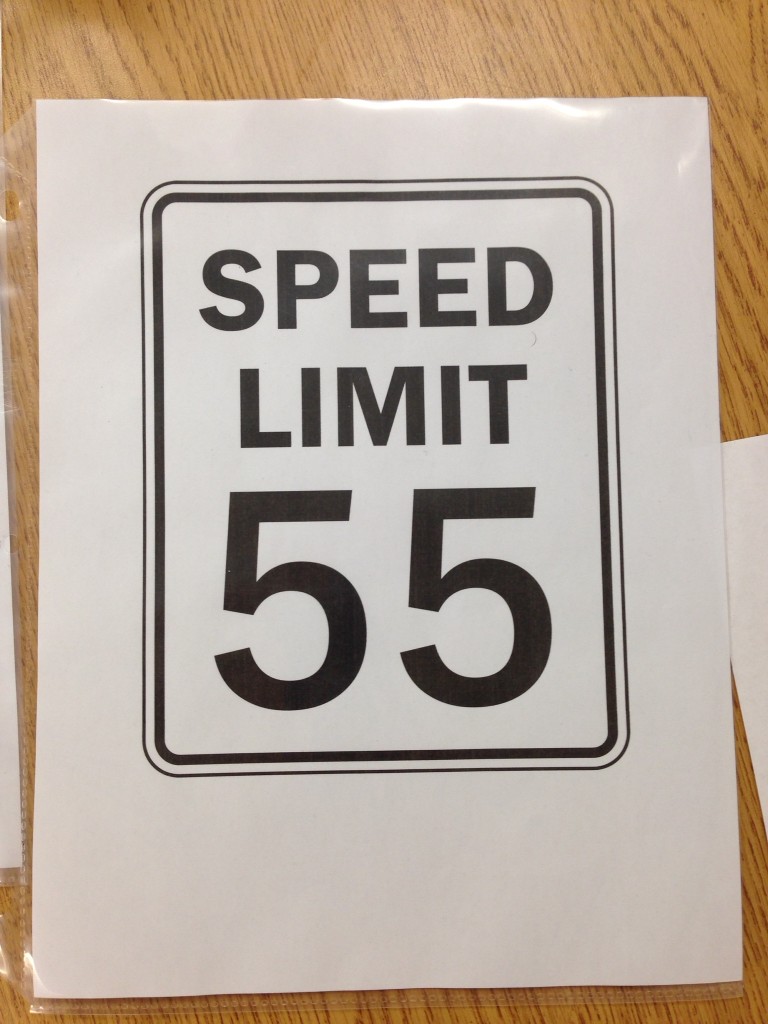 e.
e.